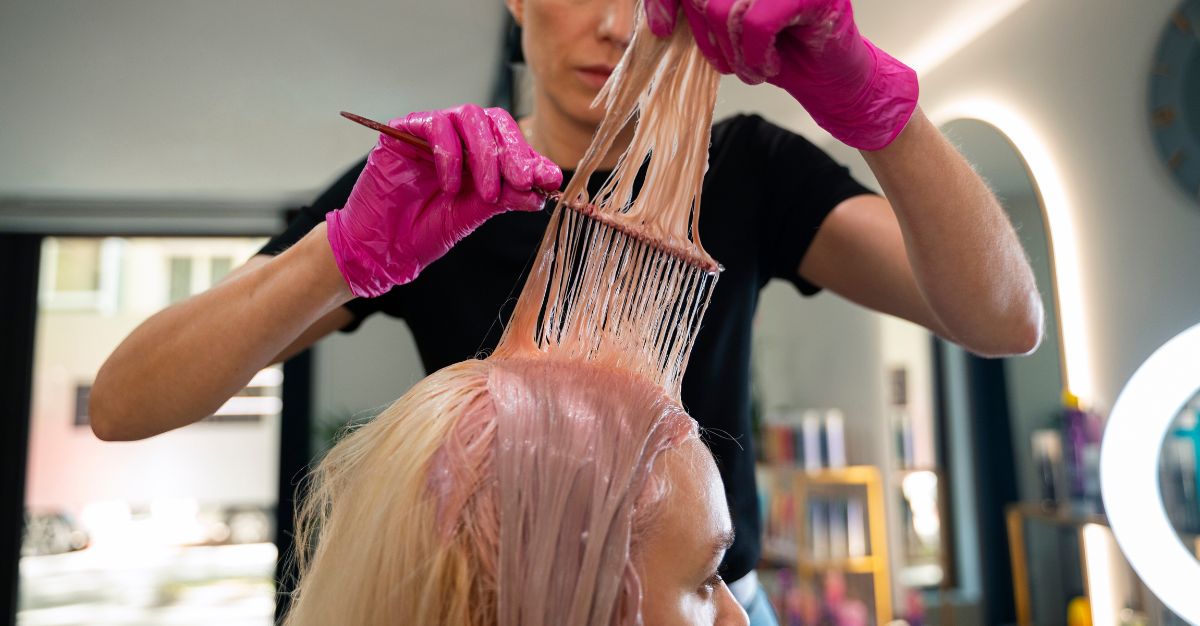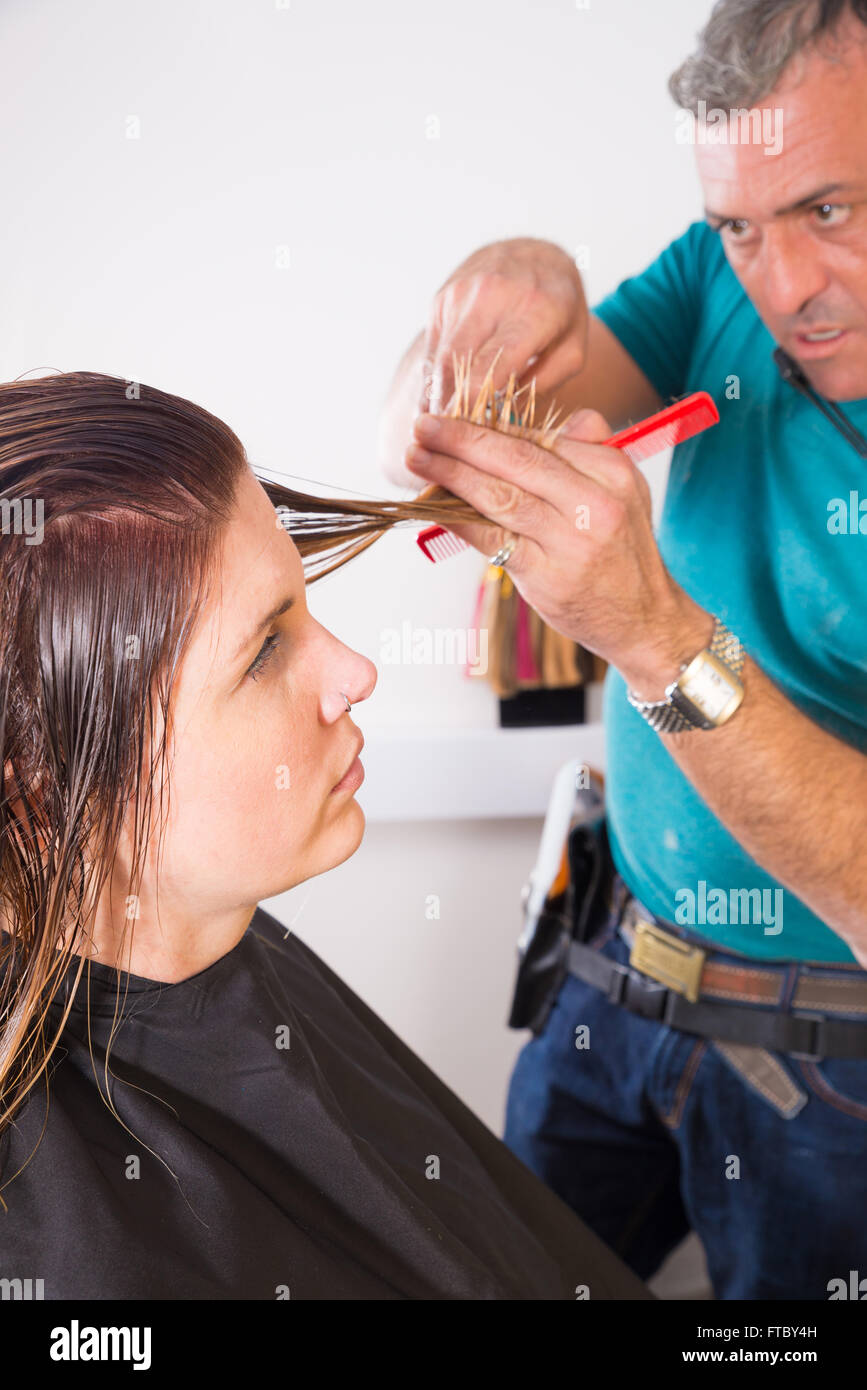How to Care for Bleached and Dyed Hair
Transforming your hair color with bleach and dye can be incredibly rewarding, resulting in vibrant shades and a fresh new look. However, these processes significantly alter your hair’s structure, making it more prone to damage and requiring specialized care. At hairy.cartlab.web.id, we understand the commitment involved in achieving and maintaining your dream hair color. This comprehensive guide will equip you with the knowledge and techniques to keep your bleached and dyed hair healthy, vibrant, and looking its best for longer. We’ll cover everything from choosing the right products to mastering daily care routines, ensuring your color stays stunning and your hair remains strong and resilient. Investing time and effort in proper aftercare is crucial; neglecting it can lead to breakage, dryness, and fading, ultimately undermining the entire process.
Bleaching and dyeing, while aesthetically pleasing, inevitably weaken the hair shaft. The chemical processes involved lift the natural pigments and deposit artificial ones, potentially leading to dryness, brittleness, and even damage. Understanding the specific needs of chemically treated hair is paramount to preserving its health and shine. This detailed guide aims to empower you with the knowledge and practical steps necessary for optimal hair care after undergoing these transformative treatments. By following these guidelines, you can significantly prolong the life of your color, minimize damage, and maintain healthy, vibrant hair.
This article will delve into the specifics of maintaining the health and vibrancy of bleached and dyed hair. We’ll explore the best practices for washing, conditioning, styling, and protecting your hair from environmental stressors. Remember, consistency is key – adopting a dedicated hair care routine will yield the best results and ensure your color remains vibrant and your hair stays healthy and strong.

Choosing the Right Shampoo and Conditioner

The foundation of any good hair care routine, particularly for bleached and dyed hair, lies in choosing the right shampoo and conditioner. Opt for products specifically formulated for color-treated hair. These shampoos are typically sulfate-free, meaning they’re gentler on the hair cuticle and less likely to strip away the color. Sulfates are harsh detergents that can fade your color quickly and leave your hair feeling dry and brittle. Look for terms like “color-safe,” “sulfate-free,” and “moisturizing” on the label.
- Sulfate-free shampoos: These are essential for preserving your color and preventing dryness.
- Moisturizing conditioners: These help replenish lost moisture and improve the overall health of your hair. Deep conditioning treatments should be incorporated once or twice a week for extra hydration.
- Color-depositing conditioners: These conditioners add a subtle layer of color to your hair, helping to refresh your shade and extend the time between salon visits.
Avoid shampoos containing harsh chemicals like sulfates, parabens, and silicones, which can lead to further damage and fading. Instead, focus on nourishing ingredients like argan oil, coconut oil, and shea butter, which will help to hydrate and protect your hair.
Deep Conditioning and Hydration Treatments

Bleached and dyed hair is inherently drier and more prone to breakage. Regular deep conditioning is therefore crucial to maintain its health and shine. Deep conditioning treatments help to replenish moisture, repair damage, and strengthen the hair shaft. Aim to use a deep conditioner at least once a week, or even twice if your hair is particularly dry or damaged.
- Leave-in conditioners: These can provide additional hydration and protection throughout the day, especially if you’re using heat styling tools.
- Hair masks: These intensive treatments are designed to penetrate deep into the hair shaft, providing intense hydration and repair. Leave them on for the recommended time (usually 20-30 minutes) for optimal results.
- Oil treatments: Natural oils like coconut oil, argan oil, and jojoba oil can be used as pre-shampoo treatments to deeply moisturize and nourish your hair. Apply them to dry hair, leave on for at least 30 minutes (or overnight), and then shampoo and condition as usual.
Remember to always follow the instructions on the product packaging for best results. Consistency with deep conditioning is key to keeping your bleached and dyed hair healthy and vibrant.
Protecting Your Hair from Heat and Sun

Heat styling tools like straighteners, curling irons, and blow dryers can significantly damage already compromised bleached and dyed hair. Always use a heat protectant spray before applying any heat to your hair. This creates a barrier between your hair and the heat, minimizing damage and preventing breakage.
- Heat protectant sprays: These are essential for anyone who regularly uses heat styling tools. Apply them evenly to damp or dry hair before styling.
- Limit heat styling: Whenever possible, try to air dry your hair to minimize heat damage. If you must use heat styling tools, use them on a lower setting.
- Sun protection: UV rays from the sun can also fade your hair color and damage its structure. Consider wearing a hat or using a UV protectant spray when spending time outdoors, especially during peak sun hours. This is particularly important during summer months.
Learning how to keep your hair healthy and strong every day is just as important as protecting it from heat and sun. Check out our article on How to Keep Your Hair Healthy and Strong Every Day for more tips.
Styling Your Bleached and Dyed Hair Gently

How you style your hair plays a significant role in its overall health. Avoid harsh brushing, especially when your hair is wet, as this can lead to breakage. Use a wide-tooth comb to detangle your hair gently, starting from the ends and working your way up.
- Wide-tooth comb: This is gentler on your hair than a brush, especially when it’s wet.
- Gentle brushing: Avoid aggressive brushing, which can cause breakage and damage.
- Avoid tight hairstyles: Tight hairstyles like ponytails and braids can pull on your hair, leading to breakage. Opt for looser styles to minimize stress on your hair.
- Protective hairstyles: Consider protective hairstyles like loose braids or buns, especially when sleeping, to minimize friction and breakage.
If you have short hair and are looking for ways to add volume, our guide on Tips to Style Short Hair for Volume provides helpful techniques.
Regular Trims and Professional Care

Regular trims are essential for maintaining the health and appearance of bleached and dyed hair. Split ends and breakage can travel up the hair shaft, causing further damage. Getting regular trims (every 6-8 weeks) helps to prevent this and keep your hair looking its best.
- Regular trims: These help to remove split ends and prevent further damage.
- Professional color touch-ups: Consult your stylist for regular color touch-ups to maintain your desired shade and prevent fading.
- Avoid over-processing: Avoid frequent bleaching or dyeing, as this can severely damage your hair. Give your hair time to recover between treatments.
It’s also vital to be aware of common hair care mistakes. Our article, 7 Common Hair Care Mistakes to Avoid, highlights pitfalls to steer clear of for healthy, vibrant hair.
Conclusion
Caring for bleached and dyed hair requires a dedicated approach, but with the right products and techniques, you can maintain its vibrancy and health for longer. Remember to choose sulfate-free shampoos and conditioners, incorporate regular deep conditioning treatments, protect your hair from heat and sun, and style it gently. Regular trims and professional touch-ups are also essential. By following these guidelines, you can keep your color looking stunning and your hair healthy and strong. For more information and guidance on how to care for your bleached and dyed hair, visit How to Care for Bleached and Dyed Hair. Remember, healthy hair is beautiful hair!





Comments